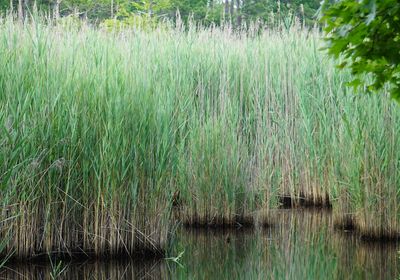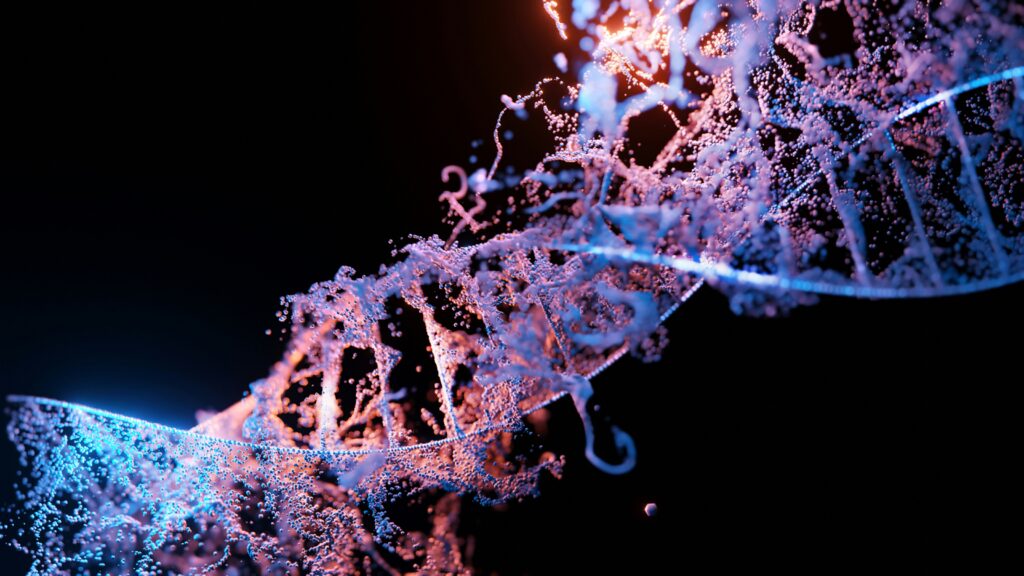Watershed reeds of midcoast Maine provide a deeper look into the field of epigenetics
Forests, grasslands, and marshes are ecological battlegrounds. In the fight to hold territory, maintain access to resources, and reproduce, many organisms compete directly to occupy the same niche– the role played by a specific organism in an ecosystem. An organism’s ability to carry out these roles is dictated by its “fitness” or capacity to survive and contribute its genes to the next generation. Naturally, relative reproductive success is incredibly environmentally dependent. Most organisms are tailor-made to thrive within their native habitats via natural selection. However, this biological narrative is challenged by the proliferation of invasive species in competition with their native counterparts. In their 2016 study, Spens and Douhovnikoff argue that epigenetics may be key to understanding ecological invasiveness and that the common reed (Phragmites australis) is “an ideal model species” (Spens & Douhovnikoff, 2016) for studying this rapidly expanding subfield of genetics.
Among other things, greater phenotypic plasticity, or “the ability of individual genotypes to produce different phenotypes when exposed to different environmental conditions” (Fusco & Minelli, 2010), increases an organism’s potential to adjust to its surroundings and occupy a vast variety of niches. This becomes possible through epigenetics. Epigenetic modifications alter gene expression without changing the underlying DNA sequence (Weinhold, 2006). Methylation, the process by which methyl groups are added to DNA, is the key turning genes “on” and “off” (Menezo et al., 2020). The addition of methyl groups prevents DNA-transcribing proteins from accessing the DNA strand, stopping the gene’s expression as a protein. This has the potential to create significant differences in structural and even cellular function among individuals that are otherwise genetically identical.
Clonal plants provide a unique opportunity to study environmental pressures on epigenetics, as these individuals can act as their own genetic control. Reeds are an excellent example of this: as facultatively clonal plants, they can utilize both sexual and asexual reproduction. Exploiting this integral feature, and the existence of multiple subspecies of reed in midcoast Maine, researchers studied the genomes of both native and invasive reeds in two separate locations, Libby and Webhannet. They addressed two questions: Do introduced subspecies exhibit greater epigenetic variation (indicating that epigenetics plays a role in the success of an invasive species)? And will the variation between subspecies genotypes be lesser than the variation within a single genotype’s epigenetic markers (suggesting that epigenetic variation can be used to adapt to an incredibly variable environment)?
Researchers sought answers by studying clusters of reeds called ramets. Since all the reeds within a ramet were genetically identical, they could selectively measure epigenetic variation. These clones were grown within heterogeneous microhabitats that contain varying combinations of nutrients and conditions. Extracted DNA fragments were compared based on the level of methylation among subspecies, genotype, and ramet.
In both sites, the invasive reed demonstrated greater epigenetic diversity than the native reed (Figure 1). Up to 71% of epigenetic variation at the Webhannet site is attributed to differences among genotypes. These results suggest that clones adjust to the demands of their environments via epigenetics, rather than genotypic adaptation. Flexibility of this kind allows for rapid specialization in response to the hyper-individualized environmental conditions of each ramet. Additionally, each site developed an epigenetic “signature” with both subspecies exhibiting distinct, location specific, morphological characteristics. The significant differences in epigenetic markers between sites hint at the potential for large scale shifts due to epigenetics, should genotype not be a factor in these differences. The distinct characteristics displayed by each species demonstrate the vast alterations necessary to survive in an environment with subtle differences.

While this study was small scale, it supports the position that epigenotype variation provides a strong competitive advantage in the natural world. It also suggests that further study would provide more valuable information about the relevance of epigenetics in ecology. In our rapidly changing environment, due to climate change and other human influences, these native genotypes are in danger of being displaced from their niches. Despite a species’ history with its habitat, subtle alterations can have vast impact on individuals that demonstrate low plasticity or tolerance for change. Introduced organisms who demonstrate more flexible epigenotypes have the potential to outcompete their neighbors, eroding local ecosystems beyond repair. This reality drives ecological research in the direction of epigenetics, not only for the sake of discovery, but also in hopes of protecting species who cannot adapt as quickly as we disrupt.
Works Cited
Fusco, G., & Minelli, A. (2010). Phenotypic plasticity in development and evolution: Facts and concepts. Philosophical Transactions of the Royal Society B: Biological Sciences, 365(1540), 547–556. https://doi.org/10.1098/rstb.2009.0267
Menezo, Y., Clement, P., Clement, A., & Elder, K. (2020). Methylation: An Ineluctable Biochemical and Physiological Process Essential to the Transmission of Life. International Journal of Molecular Sciences, 21(23), 9311. https://doi.org/10.3390/ijms21239311
Spens, A., & Douhovnikoff, V. (2016). Epigenetic variation within Phragmites australis among lineages, genotypes, and ramets. Springer International Publishing. https://link.springer.com/article/10.1007/s10530-016-1223
Weinhold, B. (2006). Epigenetics: The Science of Change. Environmental Health Perspectives, 114(3), A160–A167.

